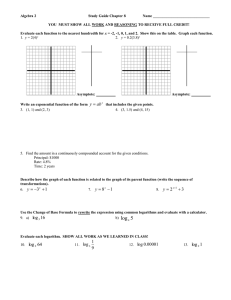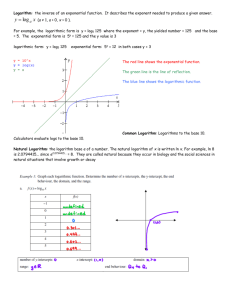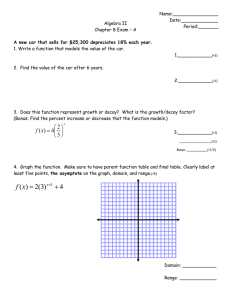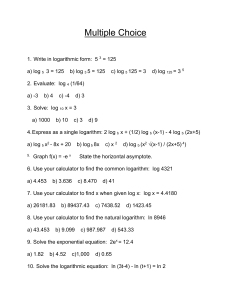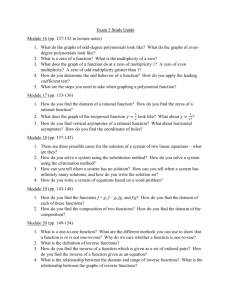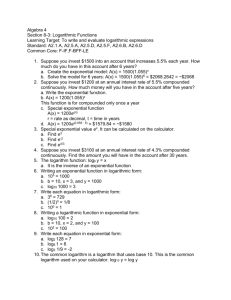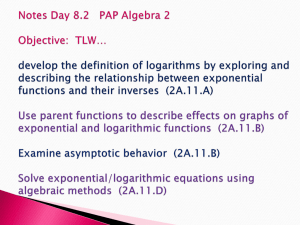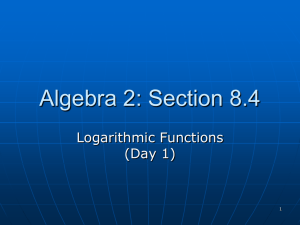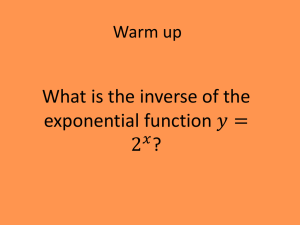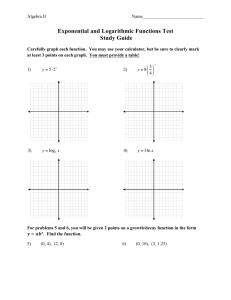y b = log 100 1 log 3 log 125 logb y x = number base = power
advertisement
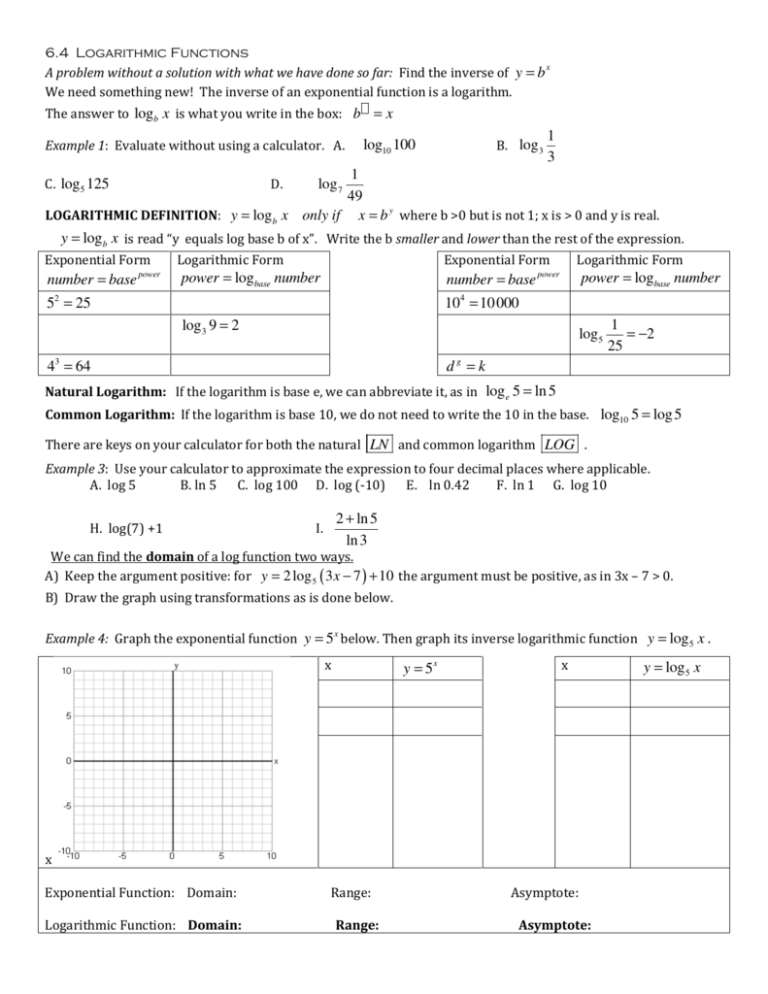
6.4 Logarithmic Functions x A problem without a solution with what we have done so far: Find the inverse of y = b We need something new! The inverse of an exponential function is a logarithm. The answer to logb x is what you write in the box: b = x Example 1: Evaluate without using a calculator. A. log10 100 B. log 3 1 3 1 49 LOGARITHMIC DEFINITION: y = log b x only if x = b y where b >0 but is not 1; x is > 0 and y is real. C. log5 125 D. log 7 y = log b x is read “y equals log base b of x”. Write the b smaller and lower than the rest of the expression. Exponential Form number = base power Logarithmic Form Exponential Form power = logbase number number = base Logarithmic Form power power = logbase number 4 52 = 25 10 = 10000 log 3 9 = 2 log5 43 = 64 1 = −2 25 dg = k Natural Logarithm: If the logarithm is base e, we can abbreviate it, as in log e 5 = ln 5 Common Logarithm: If the logarithm is base 10, we do not need to write the 10 in the base. log10 5 = log 5 There are keys on your calculator for both the natural LN and common logarithm LOG . Example 3: Use your calculator to approximate the expression to four decimal places where applicable. A. log 5 B. ln 5 C. log 100 D. log (-10) E. ln 0.42 F. ln 1 G. log 10 H. log(7) +1 2 + ln 5 ln 3 I. We can find the domain of a log function two ways. A) Keep the argument positive: for y = 2 log 5 ( 3 x − 7 ) + 10 the argument must be positive, as in 3x – 7 > 0. B) Draw the graph using transformations as is done below. Example 4: Graph the exponential function y = 5 x below. Then graph its inverse logarithmic function y = log 5 x . x y = 5x x x Exponential Function: Domain: Logarithmic Function: Domain: Range: Range: Asymptote: Asymptote: y = log 5 x Example 5: Graph the function y = log 5 ( x − 3 ) . First find points on y = log 5 ( x ) and then do the transformation. x x y = 5x x y = log 5 ( x ) y = log 5 ( x − 3 ) x y = log 5 ( x − 3 ) Domain: Range: Asymptote: Example 6: Graph the function y = ln ( x ) + 1 . First find points on y = ln ( x ) and then do the transformation. x y = ex x x y = ln ( x ) y = ln ( x ) + 1 x y = ln ( x ) + 1 Domain: Range: Asymptote: Example 7: Graph the function y = − log 2 x − 4 . First find points on y = log 2 ( x ) and then do the transformation. 3 x x x y = − log 2 − 4 3 Domain: y = log 2 ( x ) Range: x x y = − log 2 3 x Asymptote: x y = − log 2 − 4 3
